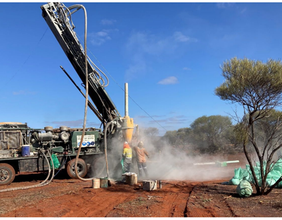Highlights
- Rising inflation concerns challenge central bank strategies.
- Bond market reacts to inflation and interest rate shifts.
- Australia faces unique inflation pressures amid global trends.
The global financial landscape is undergoing significant changes, with rising inflation and geopolitical tensions putting pressure on economies worldwide. The prolonged conflict between Iran and Israel, for example, is affecting supply chains, leading to a sharp rise in oil prices, which surged by 15%. This rise is heightening concerns about inflation, a challenge central banks have been grappling with.
Recent US inflation data revealed higher-than-expected core inflation, with goods prices climbing at their highest rate since May last year. Core services inflation remains strong, compounding the problem. This unexpected rise in inflation is making it harder for central banks to implement aggressive interest rate reductions. The US Federal Reserve, in particular, is facing internal disagreements over whether it should cut interest rates by 25 or 50 basis points. Recent board minutes revealed that the first dissenting vote from a governor since 2005 occurred due to this debate.
In the labor market, the US unemployment rate fell to 4.05%, below the Federal Reserve's estimate of full employment, which sits around 4.2%. Wage growth, as measured by average hourly earnings, also accelerated, adding to inflationary pressures. These economic conditions are raising concerns that interest rate cuts may not be as imminent or deep as previously anticipated.
As a result of these developments, the bond market has seen significant movements. The yield on the 10-year US Treasury bond rose from 3.61% to 4.06%, while Australia's 10-year bond yield increased from 3.81% to 4.23%. These rising yields are good news for those looking for higher fixed-rate returns but pose challenges for borrowers facing increased costs.
In Australia, inflation remains a significant concern, with the Reserve Bank of Australia's (RBA) policies under scrutiny. The RBA's inflation-adjusted interest rates are notably lower than those of other developed nations. Despite a more acute inflation problem, Australia’s real interest rates lag behind, which has contributed to higher household debt and housing prices. This situation poses financial stability risks, particularly if lenders lower their standards or riskier borrowers take on excessive debt.
The RBA’s cautious approach to raising rates is seen by some as overly relaxed. According to some analysts, Australia’s monetary policy remains less restrictive than other developed countries like the US, UK, and Canada. The central bank’s decision to prioritize employment over rapid inflation control, alongside fiscal stimulus, may further delay its inflation target, which is projected to remain above the 2% to 3% range until 2027. This slow reaction to inflation pressures could lead to more economic challenges in the future.
The global economic outlook remains uncertain, with inflation, labor markets, and central bank policies in the spotlight. Central banks, including the US Federal Reserve and the RBA, face difficult decisions ahead as they try to balance inflation control with economic stability.




